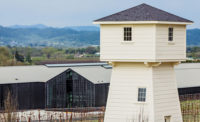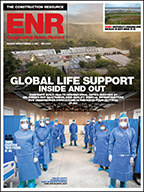Creating a WELL-certified building adds 2% or less to the cost of construction, said Paul Scialla, founder and CEO of DELOS, a provider of building wellness systems and the developer of the WELL standard. Certification costs about 75¢ per sq ft, he added.
The peer review will include input from research scientists and design and medical practitioners. "We don't want to jump the gun on this without vetting all the products academically, medically and politically," said Scialla, who started working on the standard five years ago.
The group expects to release the first version by the end of the year. An accreditation program for practitioners will follow next year. The certification is designed to work in harmony with LEED, LBC and other green building rating systems, said Scialla.
As of May 23, there were 201 LBC-registered buildings. One closely watched, registered building—expected to get the highest level of LBC certification soon—is the 50,000-sq-ft Bullitt Center, in Seattle, which is 85% occupied. Certification cannot come until the building reaches one year of net-zero energy use at 100% occupancy, or some equivalent. The six-story speculative office building houses the ILFI (ENR 2/17 p. 28). After a year of operation, it not only achieved net-zero energy use, it is sending an energy surplus to the local power grid, says its developer, the Bullitt Foundation.
The energy-use intensity for the first year was a 10, beating the goal of 16, said Paul Schwer, president of PAE Consulting Engineers Inc., which designed the building systems and is a tenant. A typical building has an EUI of 90, he added.
"The biggest transformation for us is a deeper understanding of the impact of [electric] plug loads and how controllable they really are," said Schwer.
Based on Bullitt, PAE is now advising a Fortune-500 client how to select computers to minimize plug loads. Lower plug loads mean reduced cooling needs, which can reduce a building's first cost.
When the LBC was introduced in late 2006, "people thought we would never have a living building and now we have 200," said McLennan.








Post a comment to this article
Report Abusive Comment